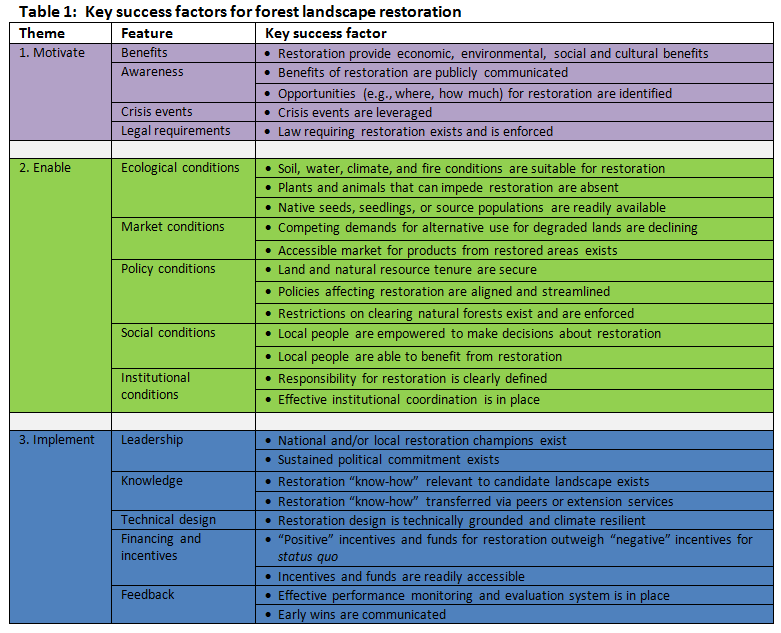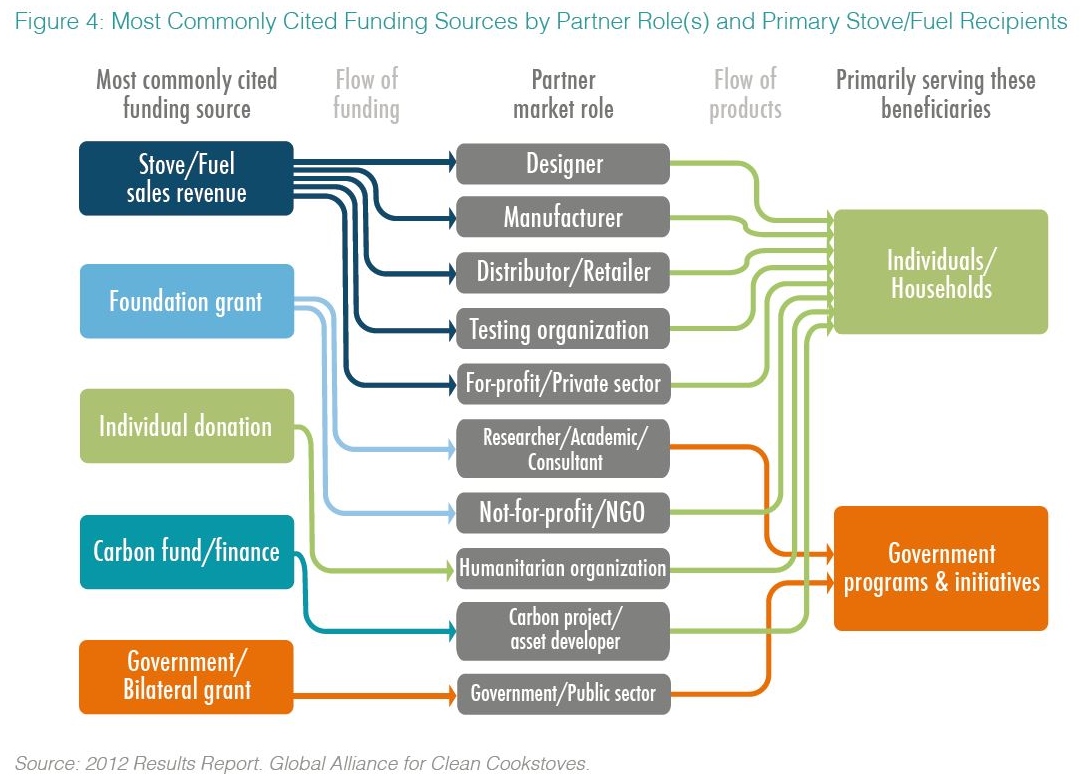 |
INTERNATIONAL POLICY
REDDy to play it safe?
Do global efforts to pay developing countries to reduce greenhouse gas (GHG) emissions from deforestation (known as REDD) aid in the fight for community and indigenous rights, or impede it? About 100 people gathered in Washington D.C. last week for the Fifteenth Dialogue on Forests, Governance, hosted by the Rights and Resources Institute (RRI), to debate this question. Arvind Khare, Executive Director of RRI, warned against moving too quickly towards REDD if ‘safeguards’ for communities are weak and land tenure still contested. Charles Di Leva of the World Bank, on the other hand, said that the current safeguards give communities various opportunities to veto activities they don’t want to take place. “If we were to require title resolution as a prerequisite, we might be excluding communities who want to participate in REDD activities,” he said.
NATIONAL STRATEGY AND CAPACITY
Romance, ravioli…and carbon
Their carbon market is little-known outside of Italy, but Italians transacted 144,515 tonnes of emissions reductions at a combined value of more than a million euros (almost 1.4 million US dollars) in 2012. Three public initiatives dominate demand, with a few companies, such as pasta producer Jolly Sgí¡mbaro, also offsetting emissions. The Nucleo Monitoraggio Carbonio, a stakeholder group of project developers, public administrations, brokers, and buyers, is now working on the Italian Forest Carbon Code, which will “raise the quality bar of the voluntary carbon market in Italy,” according to Lucio Brotto, who has been deeply involved in the process. Read the full interview with Brotto on the Forest Carbon Portal.
West Sumatra on auto pilot
West Sumatra is joining Indonesia’s REDD+ program as a pilot province, unlocking financing to support projects and initiatives in an effort to reduce the steady decline of forest cover in the region, which fell 19% over a 20-year period due to factors such as corruption and ineffective forest management. “West Sumatra has shown the same vision and commitment to reducing deforestation,” said Heru Prasetyo, head of the REDD+ Agency. “This is in line with Indonesia’s commitment to reduce greenhouse gas emissions up to 41% by 2020.”
Zimbabwe going public?
Although Zimbabwe loses about 50 million trees per year, the country has so far not been able to tap into carbon finance to support public REDD+ projects within its borders. Zimbabwe is now working on building the infrastructure and improving its readiness to implement REDD+ projects, including engaging in technical studies of the forests and establishing a REDD+ office within the commission to focus specifically on these issues. Meanwhile, the Carbon Green Africa REDD+ project in Kariba, a private REDD+ project, could generate an estimated $406 million over three decades if the offsets are sold at average prices.
Field tripping
A recent conference held in the Philippines focused on advancing REDD+ in the Asia-Pacific region. Stakeholders from several countries talked about avoiding unintended social and environmental risks related to REDD+, strengthening governance and achieving co-benefits for biodiversity conservation and improved livelihood. They also participated in a field trip to the ancestral domain of the Aeta Ambala tribe at Mount Santa Rita for a close-up view of a conservation agreement in action. The conference participants agreed to work together to share experiences and build the region’s capacity to participate in REDD+ initiatives.
Russia keeps forest watch
Russia is thinking about launching a domestic carbon market to reduce its GHG emissions, but such a market may not be ready by 2020, Oleg Shamanov, the Russian Federation’s climate negotiator, said on the sidelines of the international climate talks in Bonn, Germany. The country wants to limit emissions in 2020 to 75% of 1990 levels. Russia’s forests are the largest in the world but road-building, logging and wildfires have increasingly degraded them, so the Russian government has begun using data provided by Global Forest Watch Russia – a partnership between the World Resources Institute and Russian forest conservation groups – to combat these activities.
PROJECT DEVELOPMENT
Thinking big in Colombia
International development company Chemonics International last week awarded ecoPartners, ClearSky, and Offsetters a second contract to develop project documents for Colombia’s BioREDD program. Under Phase Two, the team will be responsible for creating Project Design Documents for four additional REDD+ projects in Colombia, to be verified by both the Verified Carbon Standard (VCS) and the Climate, Community, and Biodiversity Standard. The BioREDD+ program in Colombia will run from 2011 through 2014, during which $27.8 million will be invested in biodiversity, REDD, and climate change adaptation. In terms of REDD, the goals are to establish a total of eight financed REDD projects covering a million hectares, as well as a carbon baseline for the Pacific and Amazon regions.
Grow rice, not methane
The American Carbon Registry (ACR) last week unveiled the first reduced-methane rice project, which will avoid the emission of 6,700 tonnes of carbon dioxide (tCO2e) over 5,000 acres in California. The same day, ACR announced the expansion of its rice cultivation protocol beyond California to the Mid-South states, including the Mississippi River Delta where much of the rice in the United States is grown. Following the lead of voluntary standards, California is ever so slowly inching toward acceptance of the first agricultural-based offsets into its cap-and-trade program. Regulators also held a workshop last week on a protocol that would incentivize dry seeding or early drainage of rice fields, therefore reducing methane emissions. The protocol will go up for vote in September and could go into effect in January 2015.
FINANCE AND ECONOMICS
Hey, can you spare $30 billion dollars?
Ecosystem services provided by tropical forests are estimated at around $6,120 per hectare per year, but total yearly forest loss still averaged 13 million hectares between 2000 and 2010. Investing $30 billion per year in REDD+ programs could accelerate the transition to a green economy and ensure that REDD+ becomes an important source of income for poor rural communities, according to a new report by the International Resource Panel and the UN REDD Programme. And it’s a drop in the bucket compared to the $480 billion paid in annual global fossil fuel subsidies. But because deforestation is driven by consumption patterns in virtually every sector of the economy, REDD+ must be integrated into all economic planning processes, the report argues.
Cropping up together
A new analysis by consulting firm Trucost compared the value per hectare of monoculture soybean and palm oil cultivation in Brazil to agroforestry – and the results are striking. Growing palm alongside other crops such as cocoa, passion fruit, pepper, and bananas yielded an average of $176,044 per hectare – three times higher than the per-hectare value of palm monocultures. For soybeans, agroforestry techniques yielded 11% more value per hectare ($488 versus $441). Corporate sponsors of the study included seed giant Monsanto and Brazilian beauty company Natura Cosméticos. The natural capital analysis took into account GHG emissions from fertilizer use; provisioning services such as food, timber, and water; and regulating services such as climate stability.
SCIENCE AND TECHNOLOGY
Till tree death do us part
The Amazon’s carbon balance is a matter of life and death: living trees take carbon dioxide (CO2) out of the air as they grow, and dead trees put the GHG back into the air as they decompose. A new NASA-led study published in Nature Communications has confirmed that natural forests in the Amazon remove more CO2 from the atmosphere than they emit, reducing global warming. Lead author Fernando Espírito-Santo found that each year, dead Amazonian trees emit an estimated 1.9 billion tons (1.7 billion metric tons) of carbon into the atmosphere. Comparing that to various scenarios, carbon absorption by living trees always outweighed emissions from the dead ones.
HUMAN DIMENSION
Cleaner cow farts
Colombia’s National Development Plan calls for reducing the country’s cattle land from 38 million to 28 million hectares while increasing the number of cattle. The policy – along with some international financing – has reigned in a new era of agroforestry in which ranchers are beginning to raise cattle alongside plantains, coffee, and valuable hardwoods. Though these silvopastoral systems cost between $1,000 and $2,000 to implement, most farmers see a return on investment within two years as cows begin to produce more milk and they rely less on expensive fertilizers. Agroforestry also has an interesting side-benefit for the climate. A study from the International Center for Tropical Agriculture found that cows eating forage from silvopastoral systems produced 20% less methane.
Storm troopers
Despite accounting for just 0.7% of tropical forest area, mangrove deforestation makes up as much as 10% of GHG emissions from deforestation globally. Delegates to the recent Restoring Coastal Livelihoods conference in Indonesia convened to try to reverse the damages of the “blue revolution” that has been converting mangroves to aquaculture ponds for shrimp production. The issue has become more urgent after Typhoon Haiyan, with a death toll north of 6,200 people in the Philippines, tragically demonstrated the dangers of destroying a coastal country’s natural storm protection. “I’m proposing for the Philippines…a minimum 100-meter solid green belt of mangroves and/or beach forests,” Jurgenne Primavera, a mangrove specialist, said.
Fighting for our forests rights
Indigenous and forest peoples have demanded that the international community respect their rights to the forests, lands, territories and natural resources, a demand expressed in the Palangka Raya Declaration on Deforestation and the Rights of Forest Peoples. The declaration – published after an international workshop held earlier this month in Central Kalimantan – includes a demand to halt the production, trade and consumption of commodities derived from deforestation, land grabs and other violations of the rights of forest peoples. It also demands an end to the invasion of forest peoples’ lands and forests by agribusiness, extractive industries, infrastructures, energy and green-economy projects that deny their fundamental rights.
STANDARDS AND METHODOLOGY
Hug a tree in the city
The Climate Action Reserve (CAR) last week released a revised Urban Forestry Protocol after they received feedback that version 1.0 “presented significant hurdles to the successful implementation of urban forest offset projects.” Draft Version 2.0 thus shortened the crediting period, includes a buffer pool to insure against reversals, and introduces social and environmental co-benefits of urban forestry. CAR is holding a workshop in San Francisco on March 26 to solicit comments on the revisions (also available through a webinar), and the public comment period will be open through April 25. CAR is used on the voluntary carbon market, but the California Air Resources Board may consider CAR’s improvements for the state’s compliance Urban Forestry protocol.
PUBLICATIONS
Sharing the REDD wealth
Until 2013, Brazil had been on a six-year winning streak in reversing deforestation, but the streak ended last year when deforestation rates surged 28%. The country is hoping to tap into REDD+ financing to help get back on the right track. And a recent report called Contributions to the National Strategy for Emissions Reduction from Deforestation and Forest Degradation (REDD+): A Proposal for Allocation Between States and the Union pitched a plan that would divide both revenues and responsibilities between the Brazilian states and the federal government, including an 80-20 split of REDD+ units in favor of the states.
Learning the right lessons
A recent paper entitled REDD+ as performance-based aid: General lessons and bilateral agreements of Norway reviewed the key challenges in designing and implementing performance-based aid and examined four bilateral REDD+ agreements Norway has with Tanzania, Brazil, Guyana and Indonesia. One of the main challenges is that donors are too eager to spend money. Payment should only be made if the results are achieved, but there is immense pressure for donors to spend allocated budgets because underspending is seen as a sign of poor planning and performance. And the lessons learned included being realistic about the challenges and not basing all REDD+ aid on performance.
Errors of omission
In November 2013, the US federal government pegged the social cost of carbon at $37/tCO2e in 2007 dollars for 2015, an increase from the $24/tCO2e estimate in 2010. But a new report called Omitted Damages: What’s Missing from the Social Cost of Carbon by EDF, the Institute for Policy Integrity at NYU School of Law and the Natural Resources Defense Council finds that estimate to be on the low side because of the omission of many climate impacts. “The public picks up the tab for the types of extreme weather events that come more frequently with a changing climate,” said Gernot Wagner, a Senior Economist at EDF. “But the government is not fully assessing climate risks in its decision-making.”
JOBS
REDDX Manager – Forest Trends
Based in Washington, D.C., the REDDX Manager will organize and develop new partnerships, communication and fundraising strategies. The successful candidate will have a master’s degree, two to three years of experience managing international programs with multi-million and multi-year budgets, and knowledge of REDD+ finances and payments for ecosystem services (PES) mechanisms. French, Spanish and Portuguese language skills preferred.
– Read more about the position here
REDD+ Coordinator – VCS
Based in Washington D.C., the REDD+ Coordinator will join VCS for one year, with the possibility of permanent employment; and will be responsible for coordinating Jurisdictional and Nested REDD+ pilot programs globally. Eligible candidates must have excellent knowledge of REDD+ voluntary and regulated carbon markets, and the implementation of REDD+ programs and/or projects, with a minimum of two years of work experience in the field. Proficiency in French or another language relevant to the Africa or Southeast Asia regions preferred.
– Read more about the position here
Senior Program Officer – VCS
Based in Washington D.C., the Senior Program Officer for Agriculture, Forestry and Other Land Use (AFOLU) will be the key point of contact for project developers on AFOLU methodology, and promote the adoption of the standard. The successful candidate will have a minimum of four years of professional experience working in the land use sector, understanding of carbon market concepts (both voluntary and compliance), and willingness to travel, including internationally.
– Read more about the position here
Director, CGIAR Research Program on Forests, Trees, and Agroforestry (FTA) – CIFOR
Based in Bogor, Indonesia, the Director will provide intellectual leadership in building a shared vision for the FTA research agenda; facilitate and oversee research outcomes; and manage work plans, budgets, and reporting. The successful candidate will have a PhD in a relevant discipline, at least 15 years of experience, an open and transparent leadership style, and excellent interpersonal and communication skills.
– Read more about the position here
Agroforestry Systems Scientist – World Agroforestry Centre
Based in Yaounde, Cameroon, the Agroforestry Systems Scientist for the West and Central Africa region will provide scientific leadership in on-farm agroforestry research on smallholder farms in the humid tropics, with a focus on management systems for cocao, fruit, timber and coffee. The position requires a PhD in Agricultural Science and a minimum of five years work experience, at least four of which must be in developing countries.
– Read more about the position here
|
 |


 Environmentalists say greener palm oil is better for orangutans, whose habitat in Malaysia and Indonesia is being rapidly destroyed for oil palm plantation. Photos by Rhett A. Butler.
Environmentalists say greener palm oil is better for orangutans, whose habitat in Malaysia and Indonesia is being rapidly destroyed for oil palm plantation. Photos by Rhett A. Butler.
















